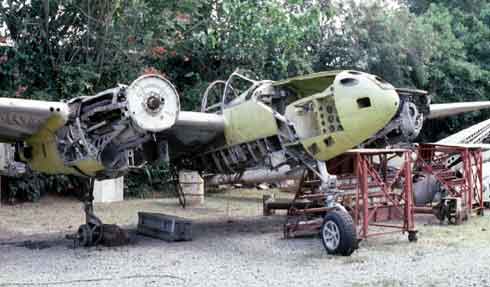|
Fighting on New Guinea was mostly on the north shore of the island which was easily accessible by navies of all the combatants. If the Japanese were to control New Guinea, however, they must also control the south shore and the New Guinea capital, Port Moresby.
The first Japanese attempt to invade the south shore of the island was by water. They assembled an amphibious force and a supporting carrier force at Rabaul and proceeded on to Port Moresby. This attempt was cut short by the American navy in the Battle of the Coral Sea. Carriers were lost on both sides and the battle was considered a draw. It also marked the most southerly penetration of the Pacific made by the Japanese forces.
Failure of the Japanese navy to capture Port Moresby left it up to the Japanese army to make an overland march across the forbidding Owen Stanley mountain range. Here their forces were turned back by Australian troops who marched up from Port Moresby. Besides the Aussie resistance, they were faced with almost impossible logistic problems as they attempted to supply their marching troops from Buna.
Supplies had to be carried on the backs of troops and the artillery towed by manpower up narrow trails in rain forests, often in heavy rains and all the time insects attacked them in droves making life very unpleasant for the Japanese mountain troops. The Japanese overland attack also failed to get near Port� Moresby.
MacArthur�s 5th Army Air Force helped destroy the vitality of the Japanese and the P-38 wreck now at the Port Moresby War Museum was one of those that carried the battle to the Japanese. The Museum also has the bomber seat that Admiral Yamamoto supposedly sat in for his visit to Buin. A mission that resulted in his death when Army P-38s intercepted his flight and shot down both bombers.
